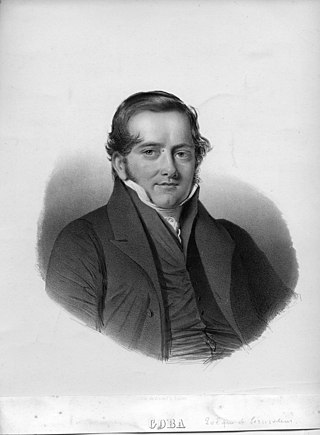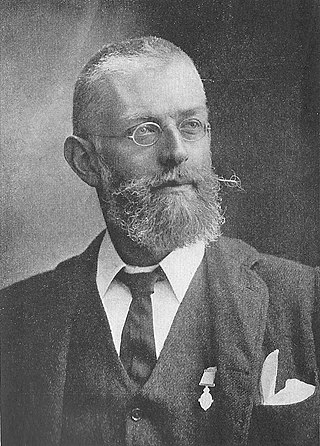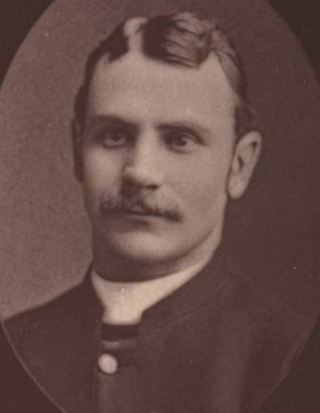Related Research Articles

Samuel Gobat was a Swiss Calvinist who became an Anglican missionary in Africa and was the Protestant Bishop of Jerusalem from 1846 until his death.

James Hudson Taylor was a British Baptist Christian missionary to China and founder of the China Inland Mission. Taylor spent 54 years in China. The society that he began was responsible for bringing over 800 missionaries to the country who started 125 schools and directly resulted in 20,000 Christian conversions, as well as the establishment of more than 300 stations of work with more than 499 local helpers in all 18 provinces.
The Church Mission Society (CMS), formerly known as the Church Missionary Society, is a British Anglican mission society working with Christians around the world. Founded in 1799, CMS has attracted over nine thousand men and women to serve as mission partners during its 200-year history. The society has also given its name "CMS" to a number of daughter organisations around the world, including Australia and New Zealand, which have now become independent.

John Richardson Selwyn was an Anglican priest who became the second Bishop of Melanesia and then the second Master of Selwyn College, Cambridge.

Theodore Leighton Pennell, was an English Protestant missionary and doctor who lived among the tribes of Afghanistan. He founded Pennell High School and a missionary hospital in Bannu in the North-West Frontier of British India, now Pakistan. For his work he received the Kaisar-i-Hind Medal for public service in India. He published a work on his life under the title Among the wild tribes of the Afghan frontier in 1908. Pennell House at Eastbourne College was named after him.
George Evans Moule was an Anglican missionary in China and the first Anglican bishop of mid-China.
Edward Craig Stuart was the second Anglican Bishop of Waiapu, whose episcopate spanned a 16-year period during the second half of the 19th century.

Joseph Charles Hoare was the Anglican Bishop of Victoria, Hong Kong from 1898 to 1906.

George William Wright was an Anglican Bishop in Africa in the mid-20th century. He was born on 17 December 1873, educated at Barnsley Grammar School and ordained in 1906 following a 15-year career as a civil servant. After a curacy at Christ Church, Derby he went as a CMS missionary to Mombasa where he remained in various capacities until 1921 when he returned to England as Vicar of Boulton. In 1923 he was consecrated Bishop of Sierra Leone and in 1936 of North Africa. He was Vicar of Templecombe from 1942 to 1951 and an Assistant Bishop in the Diocese of Bath and Wells. He died on 11 August 1956

William Wharton Cassels was an Anglican missionary bishop.
Mary Rebecca Stewart Bird (1859–1914) was a Church Mission Society (CMS) missionary who pioneered Christian ministry to Iranian women and women's medical missions in the CMS.

Archdeacon John Batchelor, D.D., OBE was an Anglican English missionary to the Ainu people of Japan until 1941. First sent under the auspices of the Church Missionary Society of the Church of England, Batchelor lived from 1877 to 1941 among the indigenous Ainu communities in the northern Japanese island of Hokkaido. He was a charismatic and iconoclastic missionary for the Anglican Church in Japan and published highly regarded work on the language and culture of the Ainu people. Batchelor only reluctantly left Japan at the outbreak of the Second World War in the Pacific in 1941.
The Kneeling Christian is a popular and influential book written by Albert Ernest Richardson who authored the book under the pseudonym "Unknown Christian".

The Church Missionary Society in the Middle East and North Africa, operated through branch organisations, such as the Mediterranean Mission, with the mission extending to Palestine, Iran (Persia), Iraq, Egypt, Ethiopia (Abyssinia) and the Sudan. The missions were financed by the CMS with the local organisation of a mission usually being under the oversight of the Bishop of the Anglican diocese in which the CMS mission operated. The CMS made an important contribution to the Episcopal Church in Jerusalem and the Middle East.

The Church Missionary Society in India was a branch organisation established by the Church Missionary Society (CMS), which was founded in Britain in 1799 under the name the Society for Missions to Africa and the East, as a mission society working with the Anglican Communion, other Protestants, and Orthodox Christians around the world. In 1812, the British organization was renamed the Church Missionary Society.

Irene Eleanora Verita Petrie was a British missionary who died in Kashmir on the Indian subcontinent in 1897.
Helen Plummer Phillips (1850–1929) was an educator, missionary, and philanthropist. She was the first missionary sent from Australia by the newly formed Church Missionary Association NSW in 1892. She was the first tutor for women students at the University of Sydney and formed the University of Sydney Women's Society in 1891 and established its settlement work, mentoring the women students until the Women's College was built and the first principal arrived. Phillips was a principal of St. Catherine's School, Waverley NSW, an advocate for women's full education, and a benefactor of St Luke's Anglican Community Church, Medlow Bath, NSW.

Gaskoin Richard Morden Wright was an English surgeon and missionary who founded the St Luke's Hospital of Nablus while he served with the Church Mission Society (CMS). St. Lukes Hospital remains the only charitable hospital in Nablus, Palestine as of 2022. Wright attended Surrey County School and St. Bartholomew's Teaching Hospital. He also published on the use of turpentine in gallstone disease. He was registered as a surgeon and physician in 1883. In 1890 he was accepted by the CMS working initially in Uganda. In October 1893, Wright went to Palestine, where he had his largest impact. Wright died in 1923 in Metheringham, Lincolnshire, England.
Leopold George Hill was an English medical missionary who worked as a member of the Church Mission Society (CMS) treating leprosy patients in Pakhoi, China. Hill was motivated to join missionary work by his religious upbringing and intended to treat his patients to not only recover physically but also gain a sense of religious purpose. He worked alongside his wife, Emma Amelia Hill, as well as with other fellow missionaries to continue the work of Dr. Edward Horder's establishment of the Pakhoi leper colony. After retiring from missionary service, Hill continued his contributions to CMS through administrative work as a Physician to the Society.
Harold Gilbee Anderson was an English medical missionary who worked in western China. Anderson served as Medicla Superintendant to the Church Missionary Society (CMS) from 1948-1959. Anderson based his mission around Evangelism, claiming that the goal of medical missions is to help men to find their "wholeness" in life.
References
- ↑ Church Missionary Society (Great Britain) (1905). Register of Missionaries: Clerical, Lay & Female, and Native Clergy from 1804 to 1904. Church Missionary Society.